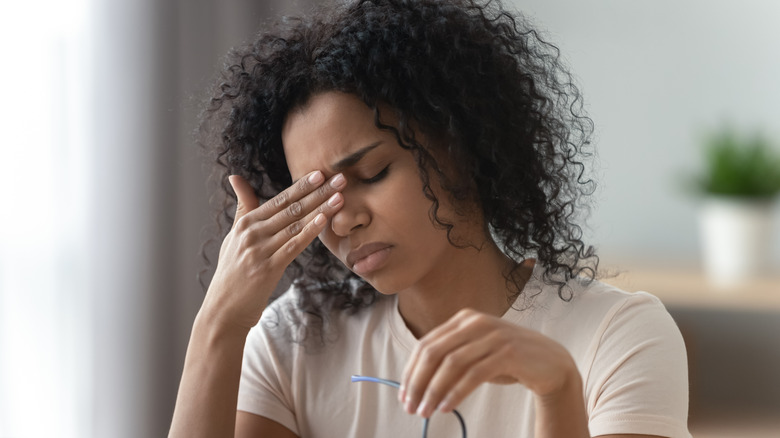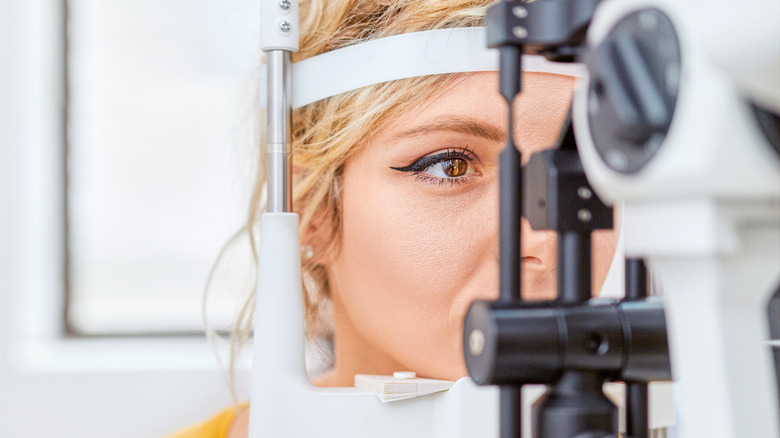The Best Ways To Prevent Eye Strain
You can get eye strain from driving or reading for a long time, but the most common cause of eye strain is staring at a device —computer, phone, or tablet. For example, if you work on a computer and stare at a screen all day, you have likely experienced eye strain. Eye strain, also called asthenopia, is a common problem now with many people working on computers. It's also called digital eye strain or computer vision syndrome, according to the American Optometric Association (AOA).
According to All About Vision, symptoms are dry eyes, tired eyes, eye discomfort, headaches, blurry vision, twitchy eyes, red eyes, or neck or shoulder pain. If you've experienced these symptoms, you might have eye strain. Ever worked on a computer for some time and then closed your eyes just to rest them? That's a sign your eyes are tired. WebMD states that you usually blink about 15 to 20 times a minute to keep your eyes from getting dry. However, you blink about half that when you're staring at a screen, causing dryness and irritation. In addition, digital screens make your eyes work harder with the background, flickering, and glare.
The Cleveland Clinic adds other symptoms — watery eyes, light sensitivity, trouble concentrating, burning eyes, itchy eyes, and trouble keeping your eyes open. You have to work, but there are some steps you can take to limit the amount of eye strain you're experiencing.
Eye strain prevention and treatment
The first step is to get regular eye checkups. All About Vision recommends you see an eye doctor yearly for a comprehensive eye exam and tell the doctor about your screen time and any symptoms of eye strain. Next, get a recommendation for over-the-counter eye drops to help as needed.
Check your lighting. Bright lights can make eye strain worse. Avoid having your screen in front of or behind a window to reduce glare and brightness. Use soft LED lighting instead of fluorescent light.
Adjust your screen display settings — the brightness should be about the same as the lighting in your office. Adjust the text size, so it's more comfortable for you to read. Remember to blink more often. Blinking is not something you usually have to think about doing, but blinking more will help reduce eye strain. Healthline adds that you should make sure your screen is the proper distance and height. It should be about arm's length away and at or a little below eye level.
The Mayo Clinic recommends the 20-20-20 rule for preventing eye strain. Set a timer for 20 minutes. When it goes off, look at something 20 feet away for 20 seconds or longer. When you feel symptoms of eye strain, rest your eyes. Just close them for a few seconds and repeat as needed.


